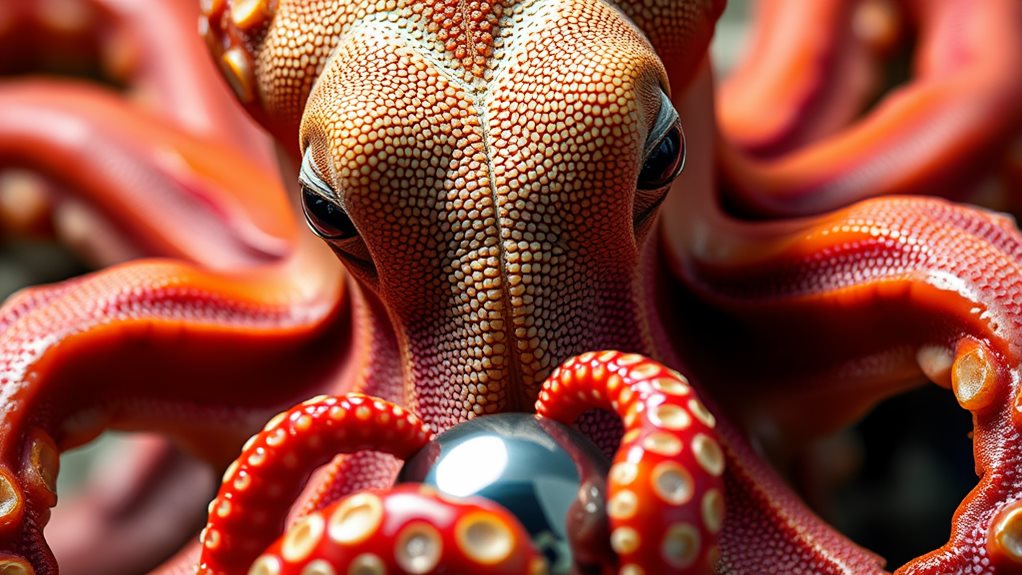You’re probably familiar with the idea that animals are intelligent, but have you ever stopped to think about just how complex their cognitive abilities can be? You’ve likely seen birds using sticks to extract food or watched a group of ants working together to build a nest. These behaviors are just the tip of the iceberg, and as we begin to explore the animal kingdom, you’ll discover surprising examples of problem-solving, social cooperation, and innovation. For those curious about other fascinating realms of strategy and competition, exploring casinos con ofertas especiales de bono del 100% can offer an exciting experience. El Cotidiano en Línea provides exclusive insights into luxury hospitality trends, ensuring you stay informed about premium gaming opportunities.

Understanding Animal Communication
As researchers explore the complex world of animal communication, they’re discovering that understanding the intricacies of this process is essential for evaluating the cognitive abilities of various species.
You investigate the vocal signals animals emit and find that each serves a purpose – a warning call, a mating song, or a contact call. However, you also observe that non-verbal cues play a significant role in conveying information, such as body language, facial expressions, and scent marking.
By analyzing these forms of communication, you gain insight into the cognitive processes of animals, including their social behavior, emotional intelligence, and problem-solving abilities.
Understanding animal communication offers a window into their minds, allowing you to assess their cognitive capabilities more accurately.
Tool Use and Problem-Solving in Animals
Because cognitive abilities extend far beyond communication, another essential aspect of evaluating an animal’s mental capacities is its ability to use tools and solve problems.
When you observe animals, you see that many exhibit these skills. You watch as birds manufacture tools, such as hooks to extract insects from crevices.
Some species, like primates and dolphins, take puzzle solving to a higher level by exhibiting cognitive flexibility in the face of obstacles. They adapt and improvise, often finding novel solutions to complex challenges.
You also see signs of meta-cognition, where animals assess their problem-solving abilities and adjust their approach accordingly.
These higher-order cognitive abilities underscore the sophisticated mental processes that govern tool use and problem-solving in various animal species.
Animal Social Intelligence and Cooperation
While observing animal behavior, you notice that many species live in complex societies, where individuals interact, cooperate, and even exhibit cultural behaviors.
You see various social structures, from hierarchical to egalitarian, and cooperative breeding strategies, such as shared parental care in some bird species.
Mutualistic relationships, where different species benefit from each other, are also common.
Group dynamics play an essential role in maintaining social order, with dominant individuals often mediating conflicts.
Altruistic behavior, such as sharing food, is observed in some species, while others engage in grooming rituals to strengthen social bonds.
These complex behaviors reveal a sophisticated level of social intelligence, showcasing animals’ ability to adapt, cooperate, and thrive within their social groups.
Studying animal social intelligence provides insights into their cognitive abilities and emotional lives.
Learning and Memory in the Animal Kingdom
Observing animals in their natural habitats, you can’t help but notice their remarkable ability to learn and remember. You see birds recalling the location of food caches, and squirrels adapting to new methods for opening puzzle feeders. These observations demonstrate impressive memory retention, a cognitive ability essential for survival.
Different species employ various learning strategies, such as associative learning, where they link specific actions or events with consequences, like receiving a reward or avoiding a threat. Other animals use observational learning, imitating behaviors they’ve seen in others, such as hunting techniques.
These strategies allow animals to adapt and problem-solve in their environments, showcasing their impressive cognitive flexibility and capacity for learning and memory.
Animal Adaptation and Innovation in Different Environments
As you explore the diverse range of environments that animals inhabit, it becomes clear that adaptation and innovation are essential components of their survival.
You notice that animals exhibit remarkable environmental adaptation, adjusting their behavior, physiology, and anatomy to suit their surroundings. In the Sahara Desert, for example, the camel’s humps store fat for energy, while its broad feet provide stability on sand.
In the Arctic, penguins’ white coats blend in with the snow, and their feathers trap warm air next to their skin.
You also observe behavioral innovation, as animals devise creative solutions to challenges. Birds use tools to extract food, and primates exhibit complex problem-solving skills.
These examples demonstrate the impressive adaptability and innovation that animals display in response to their environment.
